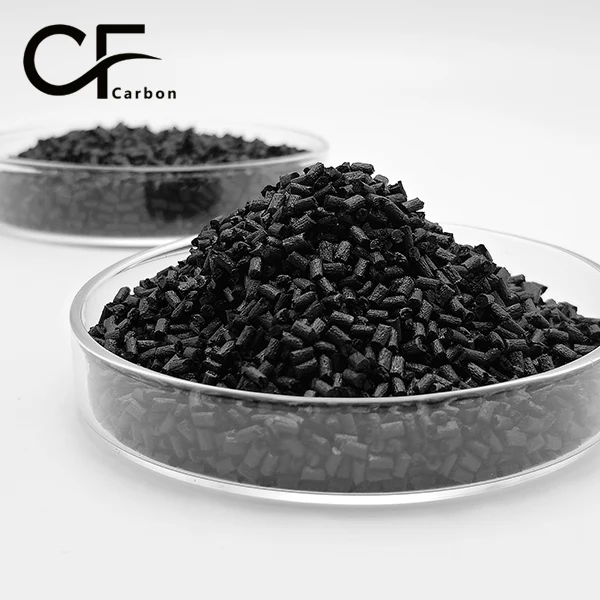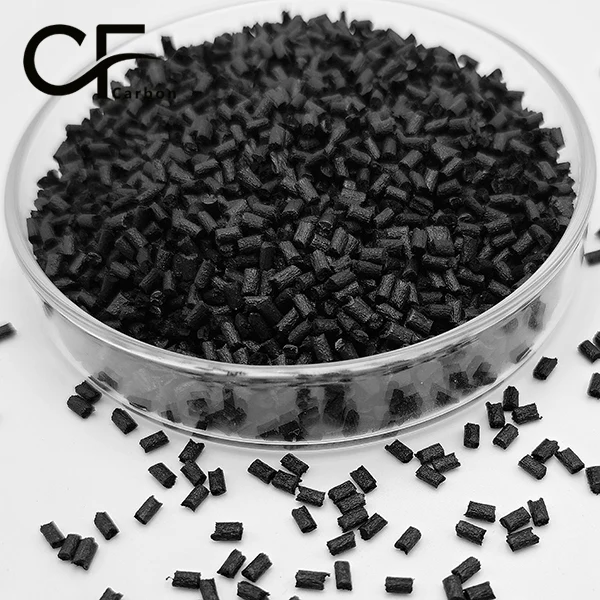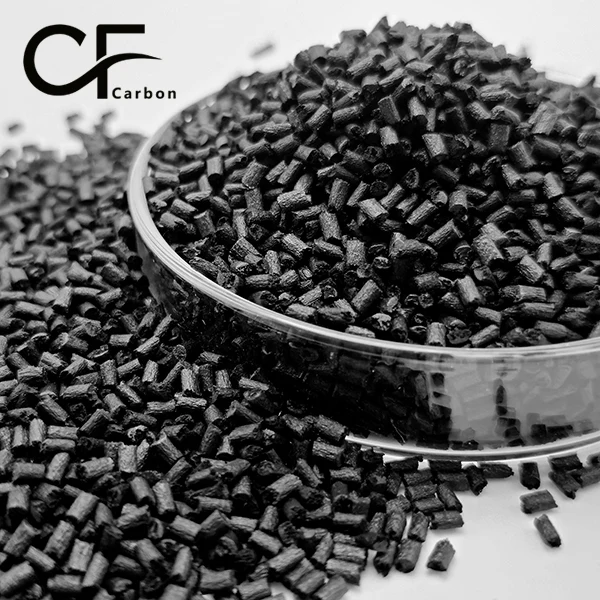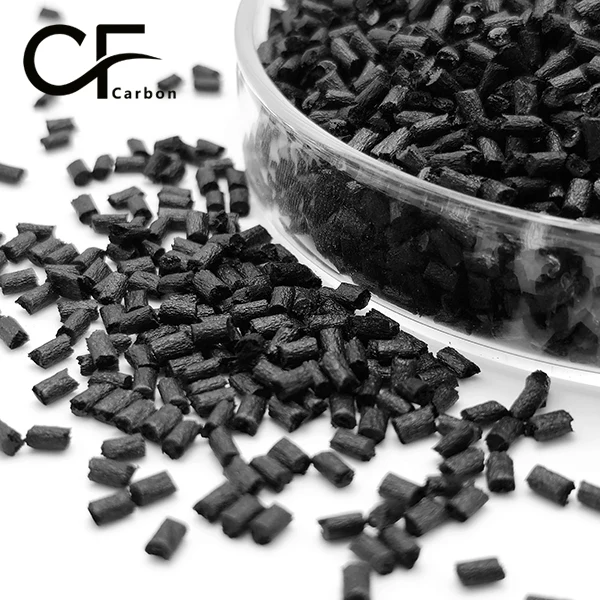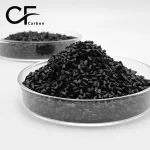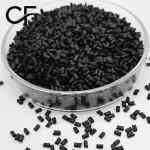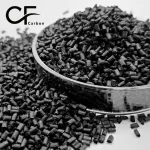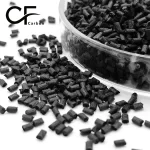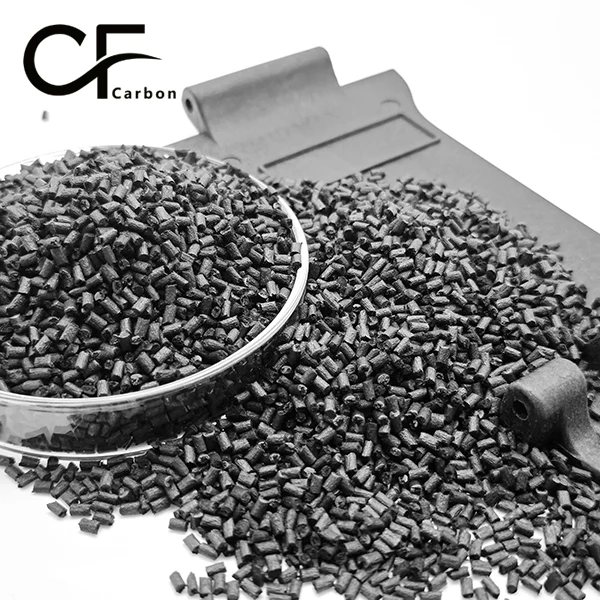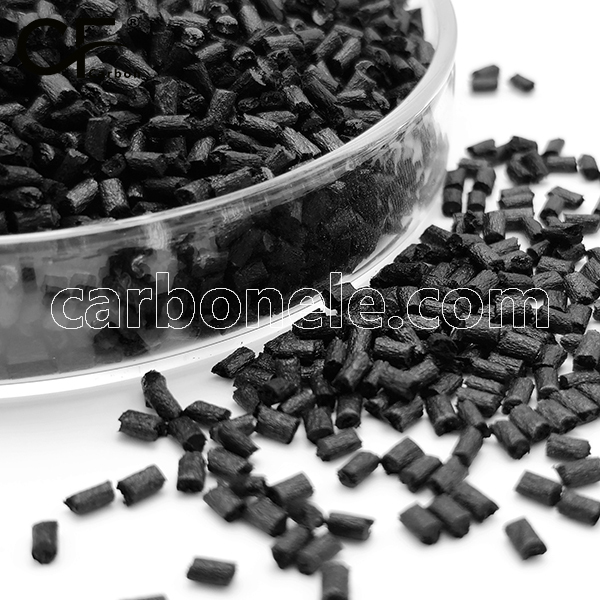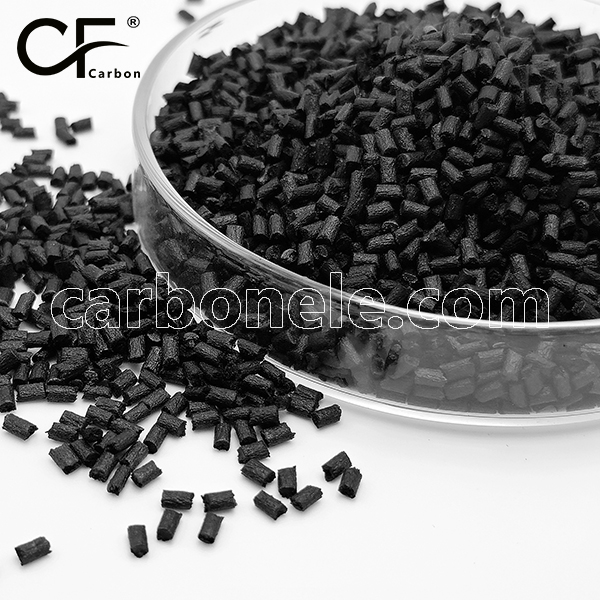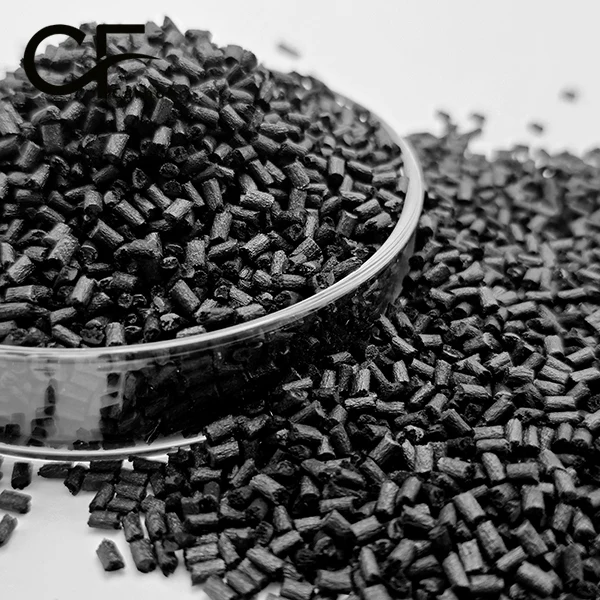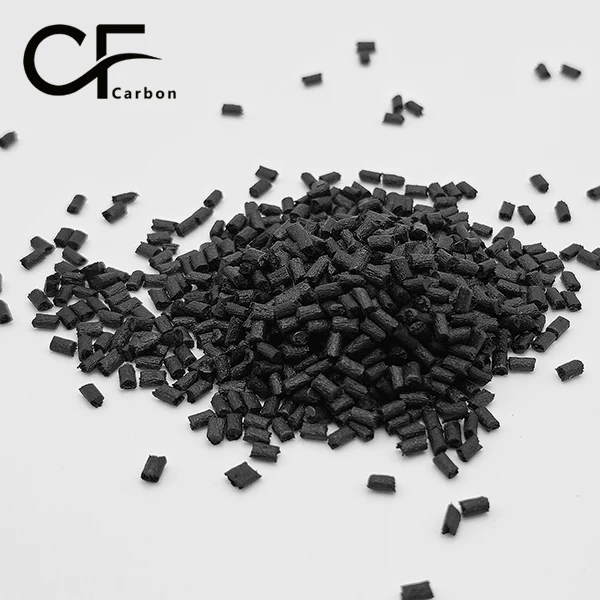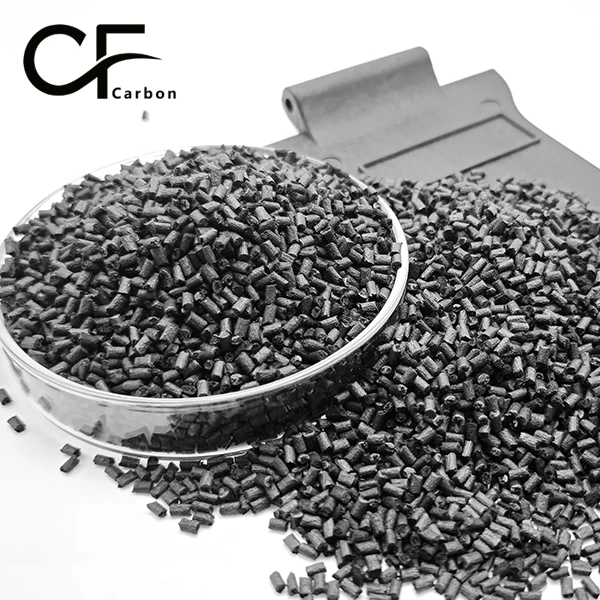
Thermoplastic Nylon Carbon Fiber Composites
1: Exceeds 200 MPa tensile strength
2: Achieves 20 GPa tensile modulus
3: Increases HDT to over 240°C
4: Reduces weight by up to 40%
5: Exceptional resistance to cyclic loading
- Manufacturer: Carbon New Material
- OEM/ODM: Acceptable
- Color: Black
- Free samples: ≤10kg
- MOQ: 100kg
- Port: Xiamen
- Model: PA66-CF-BCA3
- Fillers: SCF
I. Nylon Carbon Fiber Overview
*Nylon Carbon Fiber* composites are engineered materials composed of a polyamide (Nylon) matrix reinforced with carbon fibers. The carbon fiber content, which can range from 10% to 50% by weight, is a critical factor determining the final properties. The Nylon matrix provides excellent impact resistance and processability, while the embedded carbon fibers deliver exceptional strength, stiffness, and dimensional stability, creating a superior *Thermoplastic Nylon Carbon Fiber* material.
II. Nylon Carbon Fiber Material Key Properties
The *Thermoplastic Nylon Carbon Fiber Composites* are primarily divided into short carbon fiber reinforced Nylon (e.g., PA6-CF20, PA66-CF30) and long carbon fiber reinforced Nylon (e.g., PA6-LCF40, PA66-LCF50). These *Carbon Fiber Composites* exhibit several key performance advantages, supported by data:
1. High Strength-to-Weight Ratio
These *Nylon Carbon Fiber Composites* offer tensile strength exceeding 200 MPa, which is significantly higher than standard Nylon, while reducing part weight by up to 30%.
2. Superior Stiffness and Dimensional Stability
With a tensile modulus of up to 20 GPa, components maintain their shape under high mechanical and thermal stress, with low coefficient of thermal expansion.
3. Excellent Fatigue Resistance
Long fiber grades exhibit exceptional resistance to cyclic loading, making them ideal for dynamic structural parts.
4. Enhanced Thermal Properties
Heat deflection temperature (HDT) can be increased to over 240°C @ 1.82 MPa, allowing for use in high-temperature environments.
5. Improved Wear and Friction Properties
The carbon fiber reinforcement significantly reduces the coefficient of friction and increases abrasion resistance, extending component lifespan.
III. Material Primary Applications
*Nylon Carbon Fiber Composites* are widely used in automotive components (e.g., brackets, intake manifolds), industrial machinery parts (gears, bearings), sports equipment (bike frames, rackets), and aerospace interiors due to their high performance and lightweight characteristics. These *Carbon Fiber Composites* meet demanding application requirements.
IV. Nylon Carbon Fiber Automotive Industry Application Case
A prominent application is in automotive engine brackets. Replacing traditional aluminum with *Thermoplastic Nylon Carbon Fiber* composites results in a 40% weight reduction while maintaining the necessary structural integrity and vibration damping properties. This directly contributes to improved fuel efficiency and reduced emissions. The excellent fatigue resistance of these *Nylon Carbon Fiber Composites* ensures long-term reliability under the hood’s harsh conditions.
For a detailed technical data sheet, quotation, product catalog, or if you need further clarification, please feel free to contact us. It is important to note that the properties of carbon fiber reinforced thermoplastic composites can vary significantly depending on the matrix resin, carbon fiber content and type, and manufacturing process. The advantages of a specific composite material should be accurately evaluated based on actual application requirements and comparative testing with other carbon fiber reinforced plastics. Furthermore, products from different manufacturers may have varying performance emphases.
CFRTP VS. METALS
1. CFRTP exhibits the lowest density (1.50 g/cm³) among all compared materials, significantly outperforming traditional metals like steel (7.85 g/cm³) and copper (8.96 g/cm³), and even surpassing aluminum (2.70 g/cm³) and aluminum alloy (2.80 g/cm³). 2. In terms of strength-to-weight ratio, CFRTP demonstrates superior performance at 120 kN·m/kg, more than doubling the ratio of aluminum alloy (68 kN·m/kg) and far exceeding steel (26 kN·m/kg) and copper (14 kN·m/kg). 3. While steel shows the highest stiffness (200 GPa), CFRTP (150 GPa) outperforms aluminum (70 GPa), aluminum alloy (72 GPa), and copper (110 GPa), offering a favorable balance of rigidity and lightweight properties. 4. CFRTP achieves the highest corrosion resistance rating (9 on a 1-10 scale), surpassing all other materials including aluminum alloy (8), aluminum (7), copper (6), and steel (3), making it ideal for corrosive environments.
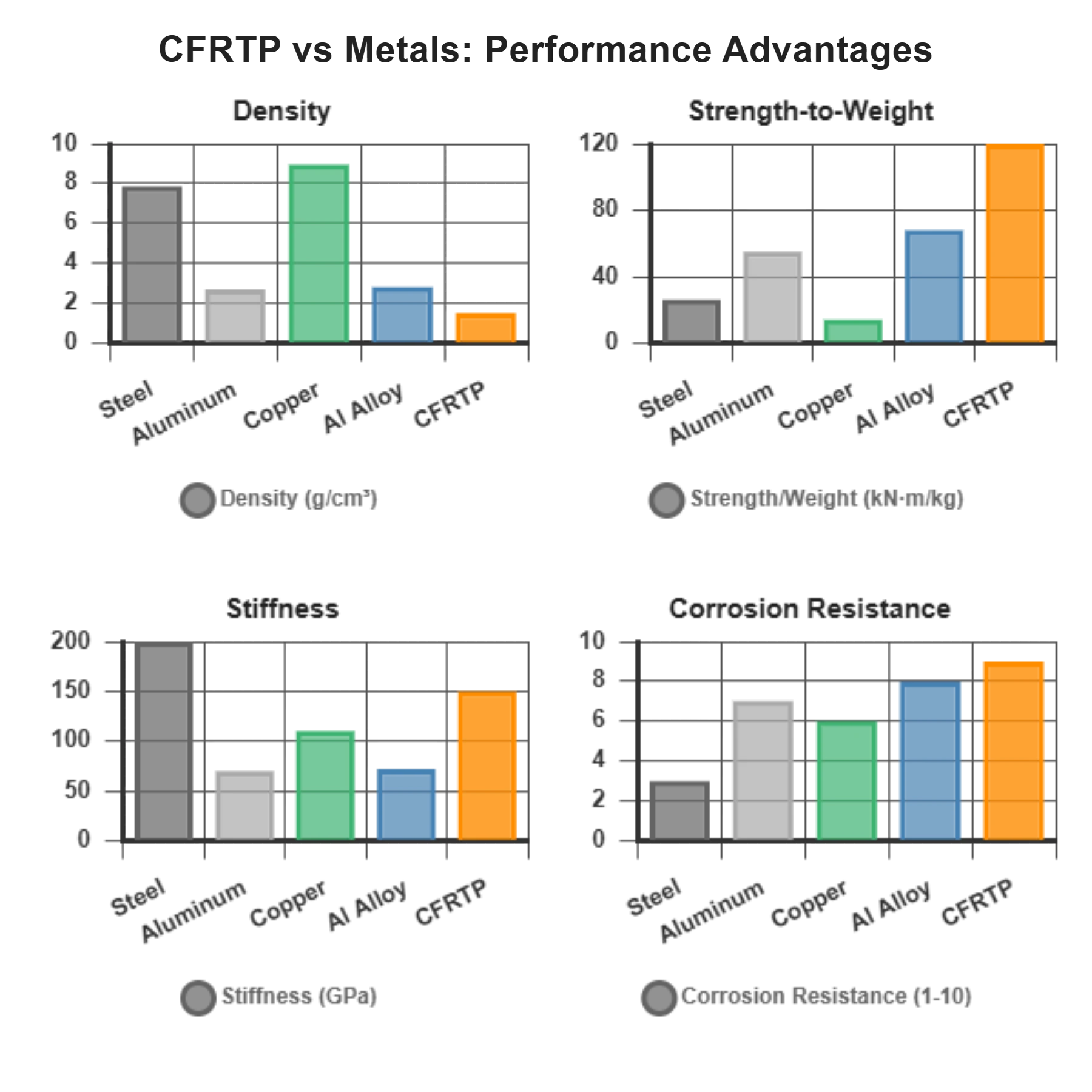
CFRTP VERSUS CFRP
1. CFRTP demonstrates significantly faster processing time (5 minutes) compared to CFRP (45 minutes), representing a 90% reduction in manufacturing duration. 2. In terms of recyclability, CFRTP outperforms CFRP by a large margin, scoring 9 on a 1-10 scale versus CFRP's score of 2. 3. CFRTP exhibits superior impact resistance (90 kJ/m²) compared to CFRP (65 kJ/m²), showing approximately 38% better performance in this category. 4. While CFRP has higher temperature resistance (220°C) than CFRTP (180°C), both materials maintain adequate thermal performance for most applications. 5. CFRTP offers greater design flexibility (rating of 90) compared to CFRP (rating of 60), providing more versatility in manufacturing and application scenarios.



Frequently Asked Questions
Carbon (Xiamen) New Material Co., Ltd. aims to provide buyers with "one-stop" worry-free high-quality services. Here you can find all information about carbon fiber engineering plastics. If you still have questions, please send us an email for consultation!
-
How can I contact the manufacturer of a product that interests me?
When you find a product you are interested in, you can contact the manufacturer directly by sending an email and we will get back to you as soon as possible.
-
How do I find the products that interest me?
All you need to do is enter the keyword, product name in the search window and press the Enter key on your keyboard. Your search results page will then be displayed. You can also search within the product category pages on the home page. Each category is divided into subcategories, allowing you to refine your search and find products that interest you.
-
Where will I find a buying guide?
Please contact our after-sales service directly and we will provide you with a comprehensive operating guide.
-
What are CF Reinforced Thermoplastic Composites?
CF Reinforced Thermoplastic Composites are materials where carbon fibers are incorporated into a thermoplastic matrix. They combine the strength and stiffness of carbon fibers with the processability and recyclability of thermoplastics. For instance, they are used in automotive parts like bumper beams.
-
What are the benefits of CF Reinforced Thermoplastic Composites over traditional composites?
The key benefits include faster production cycles, easier recyclability, and better impact resistance. They also offer design flexibility. An example is in the manufacturing of consumer electronics casings where complex shapes can be achieved more easily.
-
How are CF Reinforced Thermoplastic Composites processed?
Common processing methods include injection molding, extrusion, and compression molding. Injection molding is widely used for mass production. For example, in the production of small components for the medical industry.
-
What industries use CF Reinforced Thermoplastic Composites?
They are utilized in aerospace, automotive, medical, and sports equipment industries. In aerospace, they can be found in interior components. In the medical field, they might be used in prosthetics.
-
How does the carbon fiber content affect the properties of the composites?
Higher carbon fiber content generally leads to increased strength and stiffness but may reduce ductility. A moderate content is often balanced for specific applications. For example, a higher content might be preferred in structural parts of a race car.
-
What are the challenges in using CF Reinforced Thermoplastic Composites?
Challenges include higher material costs, complex processing equipment requirements, and ensuring uniform fiber dispersion. Issues with adhesion between the fibers and the matrix can also arise. An example is in achieving consistent quality in large-scale production.







